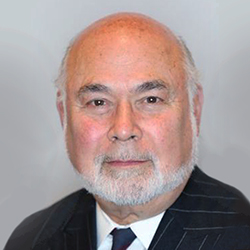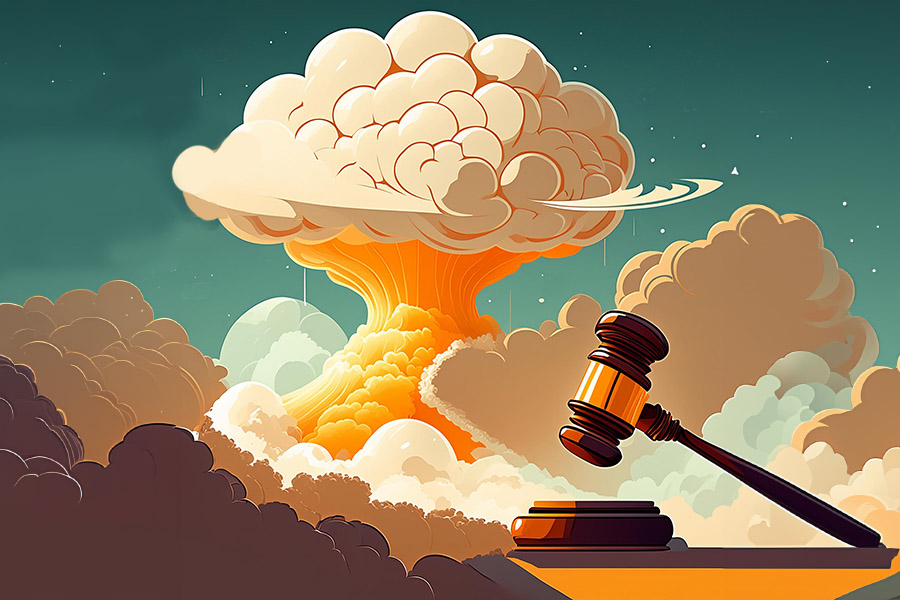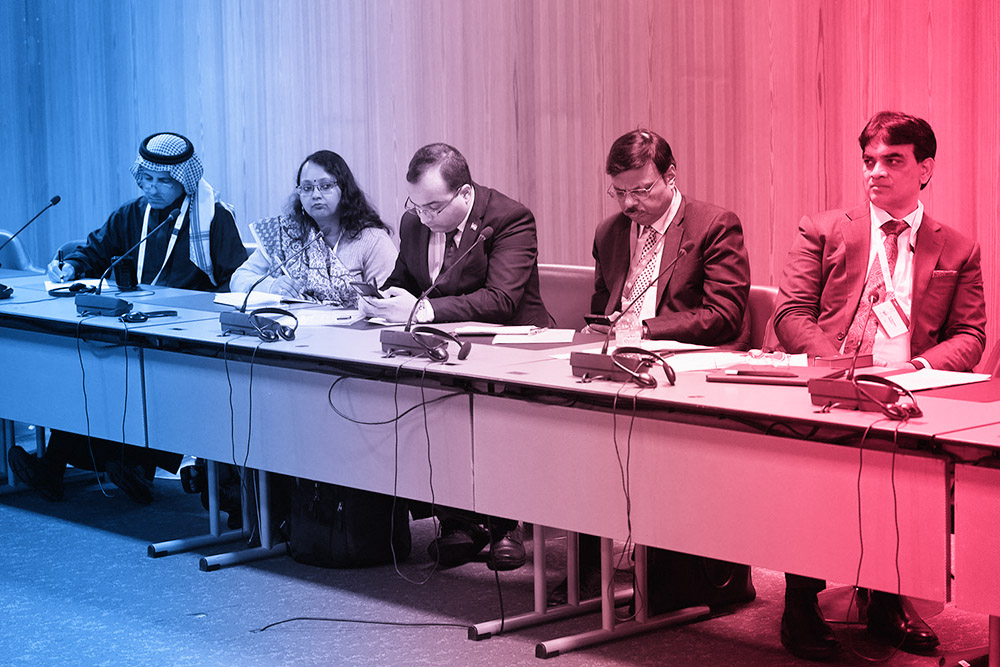Event Report
by Rhianna Tyson, Program Officer
 |
|
|
L-R: Ambassador Robert Grey, Dr. Hans Blix, Mr. Magnus Hellgren, Mr. Jonathan Granoff, Dr. Patricia Lewis
|
» Click here to read the PDF version of the Report
» Click here for the photo gallery of the event
Vienna, Austria— On May 9, 2007, the Government of Sweden sponsored a panel, organized and hosted by the Global Security Institute (GSI), entitled “Weapons in Space and the Disarmament/Non-Proliferation Regime,” part of the joint project with the Secure World Foundation (SWF) to advance a cooperative security regime in outer space. The session was a contribution to the delegates of States parties to the nuclear Non-Proliferation Treaty (NPT), gathered in Vienna for the first Preparatory Committee (PrepCom) meeting of the treaty’s 2010 review cycle. Jonathan Granoff, President of GSI, chaired the panel.Mr. Magnus Hellgren, Minister in the Permanent Mission of Sweden to the United Nations in Geneva, opened the event. As the sponsoring government, Mr. Hellgren welcomed the 150+ diplomats, NGO experts and UN staffers who had gathered in the massive Plenary Room where the NPT deliberations were taking place. He noted that Sweden was a proud sponsor of the Weapons of Mass Destruction Commission and, as such, was pleased that GSI and SWF provided the Commission and their like-minded colleagues with such a unique forum to promote the goals and objectives of the Commission’s report.
Dr. Hans Blix, Chairman of the Weapons of Mass Destruction Commission, contextualized the issue of outer space in the broader framework of cooperative security. He noted that, even during the Cold War-era of heightened tensions, the major powers managed to engage in “cooperative security”, creating a body of treaties– including the NPT– that defined international relations on military and security issues. The 1967 Outer Space Treaty (OST), for instance, “gives us a simple rule, namely that the use of space will be for peaceful purposes.” He argued that, while the militarization of space has been accepted– such as, inter alia, the use of outer space by intercontinental missiles, satellites and other military intelligence and reconnaissance systems–, the placement of weapons in space should not be permitted. Drawing from the recommendations of the WMD Commission report, he suggested that, in order to avoid such weaponization of outer space, States could convene a review conference of the Outer Space Treaty or bring the issue to the First Committee of the General Assembly.
In conclusion, Dr. Blix highlighted the strange paradox between our increasing reliance and “improving positive peaceful uses” of outer space with the growing threat perceptions that lead some States to weaponize this crucial realm. Every time we make a call on our mobile phones, or use our GPS navigational system or even check the weather for the weekend, we should be reminded of the need to preserve space for peaceful purposes, and be thus reinvigorated to stop its weaponization.
Dr. Patricia Lewis, Director of the United Nations Institute for Disarmament Research, viewed it as “particularly apt” that at this PrepCom, held during the 40th anniversary of the (OST), “we consider the connection between non-proliferation and the weaponization of space.” She continued to assert that, “the vulnerability of space assets from both the ground and space increases the perceived need for missile defenses and therefore increases the reliance on nuclear weapons, thus going in circles.”
She discussed four possible, potentially reinforcing approaches to strengthening our cooperative security regime in outer space:
* Transparency and confidence-building measures, such as codes of conduct and cooperative measures that would establish rules of the road and information exchanges that would prevent accidents;
* A new treaty regime, to be nogitated by the Conference on Disarmament (CD), such as the Prevention of the Placement of Weapons in Outer Space Treaty, as proposed by Russia;
* Building on existing international instruments that could “strengthen the space security architecture,” such as the convention on registering objects in space and the agreement governing activities on the moon;
* A “matrix” or “patchwork quilt” option, which would identify relevant areas already covered by treaties and assess the gaps in the regime. Preferring this option over other such general “panaceas”, she argued that, in this way, “interested States can build a patchwork of existing and new measures around the gaps.”
Ambassador Robert Grey, Jr., Chairman of the Bipartisan Security Group and former US ambassador to the CD, said, “The choices we make today could well be irreversible,” stating bluntly that the “weaponization of outer space would doom the NPT.” He linked the US drive for missile defenses to weaponization of space saying that “breaking the moratorium on space weaponization with such a grandiose and wasteful scheme [missile defenses] makes no sense. Wouldn’t diplomacy and patient negotiation of a treaty regulating space weaponization be a more practical and prudent way to move forward, rather than risking existing space assets through a new arms control race?”
Taking an approach similar to Lewis, Amb. Grey suggested that one approach could be an “agreement on rules of the road – informal agreements to ban certain activities. This would be a promising start, but in the end, an internationally binding treaty supported by all is the best outcome – and its time to get on with it.” He advocated for a group of committed States to convene a working group, along the lines of the New Agenda Coalition, to “come up with a series of suggestions on how to move forward towards a treaty-based regime to prevent weaponization of outer space. We need to work collectively on this now so that when the logjam in the CD is broken or negotiations begin elsewhere, we have a clear idea of what such a regime would look like.”
GSI President Jonathan Granoff chaired the ensuing discussion, wherein several representatives from governments and intergovernmental agencies offered substantive interventions. All of the speakers work directly with this issue, either in Geneva with the CD or in Vienna with the Committee on Peaceful Uses of Outer Space or the UN Office for Outer Space Affairs. Several delegates lamented the lack of cooperation and dialogue between Geneva and Vienna, and noted appreciation for this event, which provided an all-too-rare opportunity for such interaction. Mr. Granoff reflected the sentiment of the audience when he expressed his profound gratitude towards the Government of Sweden for co-sponsoring this event.
The Global Security Institute is honored to facilitate this dialogue, a necessary element to strengthening the multilateral legal regime essential for security. Without this cooperation, Mr. Granoff said, domination of the heavens by one or a few States “will tear at the very fabric” of our security regime. What is needed now is a multi-level framework of cooperative security, “needed to maintain an orderly integration of economies under the rule of law and obtain necessary levels of cooperation to address theats to the environment and terrorism.”
In conclusion, said Mr. Granoff, “it is my hope that the impact of satellites, which have done so much to bring the world’s cultures and economies together, can help us work together to bring about greater cooperation. This,” he asserted, “will clearly make our world more secure.”
Links for More Information
– “Policy Brief: Advancing a Cooperative Security Regime in Outer Space,” by Rhianna Tyson, Program Officer, May 2007.
– Transcript of remarks by Ambassador Grey
– Transcript of remarks by Dr. Lewis
– “Time for US Values in the Heavens,” op/ed by Jonathan Granoff, February, 2007. Published in CommonDreams and in the Huffintgon Post.
– “Policy Brief: Weaponization of Space,” by Ambassador Robert Grey, Jr., Director, Bipartisan Security Group.
– “Incompatible Visions: The US Space Command’s ‘Vision for 2020’,” by Jonathan Granoff and Dr. Craig Eisendrath.
– “Space Weapons and the Risk of Accidental Nuclear War,” by Thomas Graham, Jr., Chairman of the Bipartisan Security Group, Arms Control Today, December 2005.
–“Dual-Use in a New Security Environment: The Case of Missiles and Space,” Dr. Jürgen Scheffran, INESAP Bulletin, No. 26, June 2006.
– Weapons of Mass Destruction Commission report, “Weapons of Terror: Freeing the World of Nuclear, Biological and Chemical Arms.”
– “Legal Foundations and Essential Treaty Elements for a System of Common Security in Outer Space,” an analysis by Dr. Detlev Wolter, published by GSI: April 6, 2007.
Jonathan Granoff is the President of the Global Security Institute, a representative to United Nations of the World Summits of Nobel Peace Laureates, a former Adjunct Professor of International Law at Widener University School of Law, and Senior Advisor to the Committee on National Security American Bar Association International Law Section.








